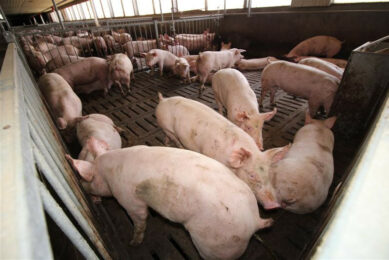ASF vaccine development: A team challenge

When observing all the different R&D done worldwide to come to a control mechanism for African Swine Fever, regular contributor Fernando Rodríguez, IRTA, Spain, cannot help thinking that solutions have to be around the corner.
I have just returned from the 3rd Gara workshop, hosted by ANSES in Ploufragan, France, between the 6th and the 9th of September with an unprecedented participation success.
In only 6 years of history, the Global African Swine Fever virus Research Alliance (Gara), has been able to bring together 135 participants from 35 different countries to discuss the present of African Swine Fever virus (ASFv) research and to plan the fighting strategies for the near future. For those of us working on ASF for many years, counting with a periodic ASFv-specific meeting represents by itself a fantastic triumph that paves the road for a more successful and productive scientific collaboration between the researchers in the field.
Topics debated on ASF virus
The topics debated during the workshop focused on:
- virus-host interactions and pathogenesis;
- epidemiology (both in Africa and in Europe);
- diagnosis, immunology and vaccinology; and
- reporting in different countries.
A multitude of scientific advances were presented but as always, many more of the knowledge gaps and the challenges were identified for future research. My limited experience in other fields causes me to remain optimistic about the future of ASFv vaccine development.
Classically inactivated vaccines
Unfortunately enough, classically inactivated vaccines do not confer protection against ASFv and subunit vaccines, ideal choice due to their biosafety, are still far from becoming a reality due to the poor protection afforded and to the lack of knowledge about the specific ASFv antigens involved in protection (ASFv encodes more than 150 proteins!).
Conversely, recombinant live attenuated vaccines obtained by finely tuning the ASFv genome (see Figure 1) have demonstrated to achieve solid protection against experimental ASFv challenge.
Figure 1 – Fine-tuning is required to obtain a safe and efficient LAV against ASFv.

Why live attenuated vaccines should play a role
Hampered in non-endemic rich areas where stamping-out and non-vaccination policies are mandatory, live attenuated vaccines should still play a key role in some endemic regions. Experimental evidence presented in the workshop confirmed this reality and definitively showed the potential of gene manipulation to obtain safer and more efficient recombinant live attenuated vaccines by deleting one or more virulence factors.
Additionally, new evidence were provided demonstrating the potential for mucosal immunisation of live attenuated vaccines or their capability to confer an early time protection. Finally, a new experimental vaccine with cross-protective capabilities was presented, thus circumventing one of the main limitations of the live attenuated vaccine prototypes so far designed.
Obtaining safe and efficient vaccines
As pointed out by one of our African colleagues during the vaccine gap analysis session, extrapolating all this knowledge to the ASFv strains currently present in Africa and to the reality of the countries that are suffering the disease is a must if wanting to globally control the disease.
I really believe that by combining today’s available strategies we should be able to obtain safe and efficient ASFv live attenuated vaccines with the potential to be implemented in some endemic areas. The ground is ours to make it possible through well-funded scientific collaboration.
Funding for vaccine development
I would like to finish with an optimistic message: The Livestock Vaccine Innovation Fund (LVIF), an initiative developed by the Bill & Melinda ‘Gates’ Foundation, Global Affairs Canada and Canada’s International Development Research Centre will invest CA$57 million over 5 years to support the development, production, and commercialisation of innovative vaccines against livestock diseases in sub-Saharan Africa, South and South East Asia and ASF is one of the main identified targets.
In a similar fashion, the European Union through the H2020 initiative, plans to fund one scientific project (up to €5 million) for 2017 focused on research and approaches for emerging diseases in terrestrial livestock, again identifying ASF vaccine development as a hot topic and reserving a predominant space for collaboration with those countries suffering the disease (from Europe and abroad).
So, ‘Gates’ are finally opening!











